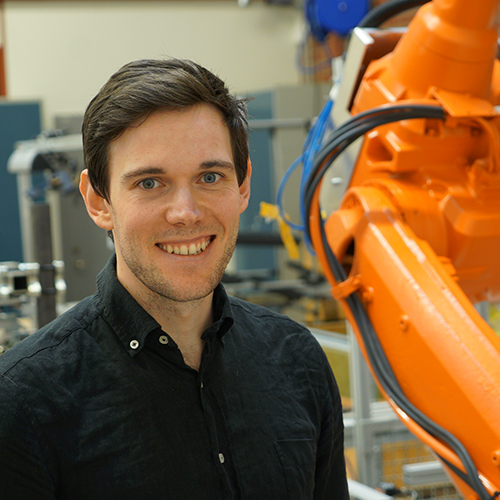-
Home
-
About Underhåll
- Conference
- Exhibitors
-
Plan your visit
-
For Exhibitors
-
Maintenance in the battery industry – an industrial revolution
 With battery production becoming the next major Swedish industry, doors are opening to challenges and opportunities. The new establishments require expertise and, not least, a maintenance strategy. Jon Bokrantz, a researcher at Chalmers University, says that the latter is a key function because the factories must never stand still.
With battery production becoming the next major Swedish industry, doors are opening to challenges and opportunities. The new establishments require expertise and, not least, a maintenance strategy. Jon Bokrantz, a researcher at Chalmers University, says that the latter is a key function because the factories must never stand still.
With support from Sweden’s innovation agency Vinnova and industry players such as Northvolt, Scania, Volvo Group and Volvo Cars, Jon Bokrantz leads the MATTER@SCALE research project. The project aims to delve into the complex world of battery production and its maintenance needs.
– Usually, research projects focus on specific areas within established industries, but in this case we were faced with the challenge of embracing the entire battery industry. The technology comes from Asia and is new to us here in Europe. We lack expertise in this area, which makes the whole research perspective both unique and fascinating, Jon Bokrantz says.
The challenge of skills shortages
Jon highlights the enormous need for skills as a key challenge. Building up a labour force with the necessary knowledge for large-scale battery production will be crucial for securing Sweden’s position as a forward-looking player in the industry.
– Let’s say a cell factory has between 3000-6000 employees and 500 of them will work on maintenance. Finding and hiring 500 engineers, technicians and maintenance managers is a challenge in itself. We need to find new ways to train and attract skilled labour. It is not only a question of keeping the machines running, but also of creating a culture of sustainable and efficient maintenance that can adapt to the rapid development of battery technology, Jon Bokrantz explains.
Evolution of a maintenance strategy
The entire large-scale battery industry in Sweden supports the research project. According to Jon, these collaborations have provided valuable insights for the work ahead.
– A year and a half ago, as a research organisation, we started working with industrial companies such as Scania, Volvo Group, Volvo Cars and Northvolt. They faced the challenge of building the factories to expand battery production but did not know how to maintain them.
In response to the industry’s challenges, Jon Bokrantz and his team took a holistic approach to the maintenance strategy for battery factories, focusing on four main areas.
- First, the competency requirements, aiming to identify the necessary skills and abilities of staff.
- Second, the organisation of maintenance activities.
- Third, supplier partnerships, both locally and globally.
- And fourth, opportunities in data analytics, where interconnected machines and sensors are used to optimise maintenance decision-making.
– Over the past year, we have mapped the characteristics of battery production that affect maintenance activities. Some key examples are in cell manufacturing, which was previously mainly carried out by Asian manufacturers and is now being established in Sweden. The scale of these facilities is massive and has a variety of production processes that require varying maintenance strategies. We face the challenge of quickly adapting to a new industry where supply chains, language barriers and the lack of regulations create complexity. The role of maintenance becomes critical to ensure that everything works properly, especially given the rapid developments in battery technology, Jon Bokrantz says.
Opportunities ahead
Looking ahead, the accelerating battery industry opens doors to a range of exciting opportunities. One that is critically important is to create innovative training and recruitment methods to meet the great need for skills in maintenance. Jon Bokrantz emphasises the importance of training and attracting a skilled workforce.
– Many see it as a challenge to find the right skills, but I also see it as an opportunity. The young generation is inspired by the green transition in industry. Freeing us from fossil fuels and creating a sustainable industry is their driving force. This is where we can reverse the trend for the maintenance industry. It may not be traditionally appealing to work in maintenance, but by linking it to the big objective that motivates many young people today, we can create attractive opportunities, Jon Bokrantz says.
He concludes:
– We have the chance to help build a whole new industry, and that’s where we can attract people to maintenance. Turn the question from scarcity to opportunity: ‘Do you want to help create this new industry?’ That’s where we find the drive and inspiration that draws people to maintenance, and that’s where we can make a real change.
Jon Bokrantz will attend the Swedish Maintenance Fair 2024 and talk more about battery production maintenance. Don’t miss the opportunity to hear from an expert in the field. Underhållsmässan takes place at the Swedish Exhibition & Congress Centre in Gothenburg from 12-15 March 2024.